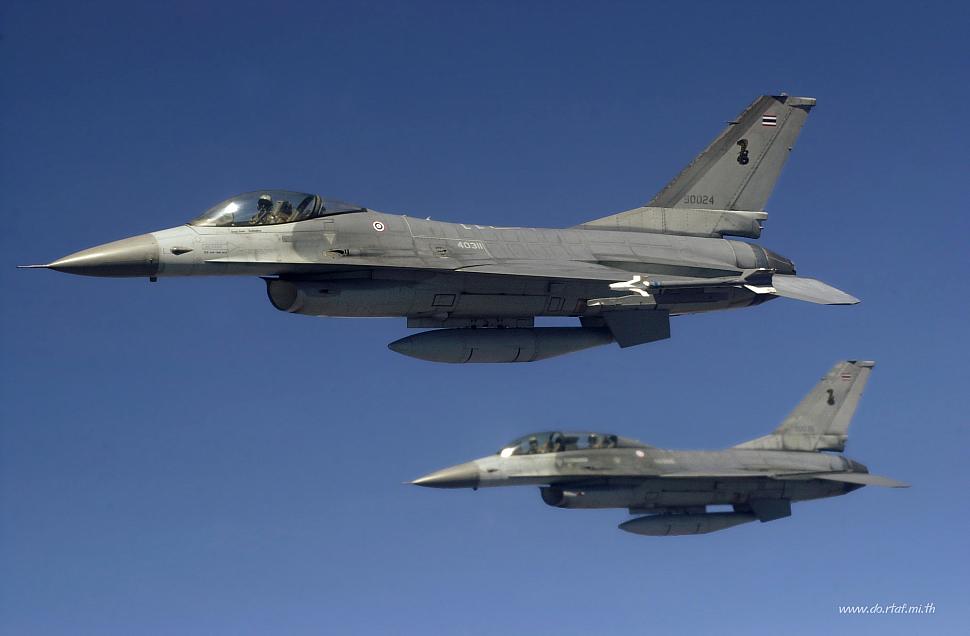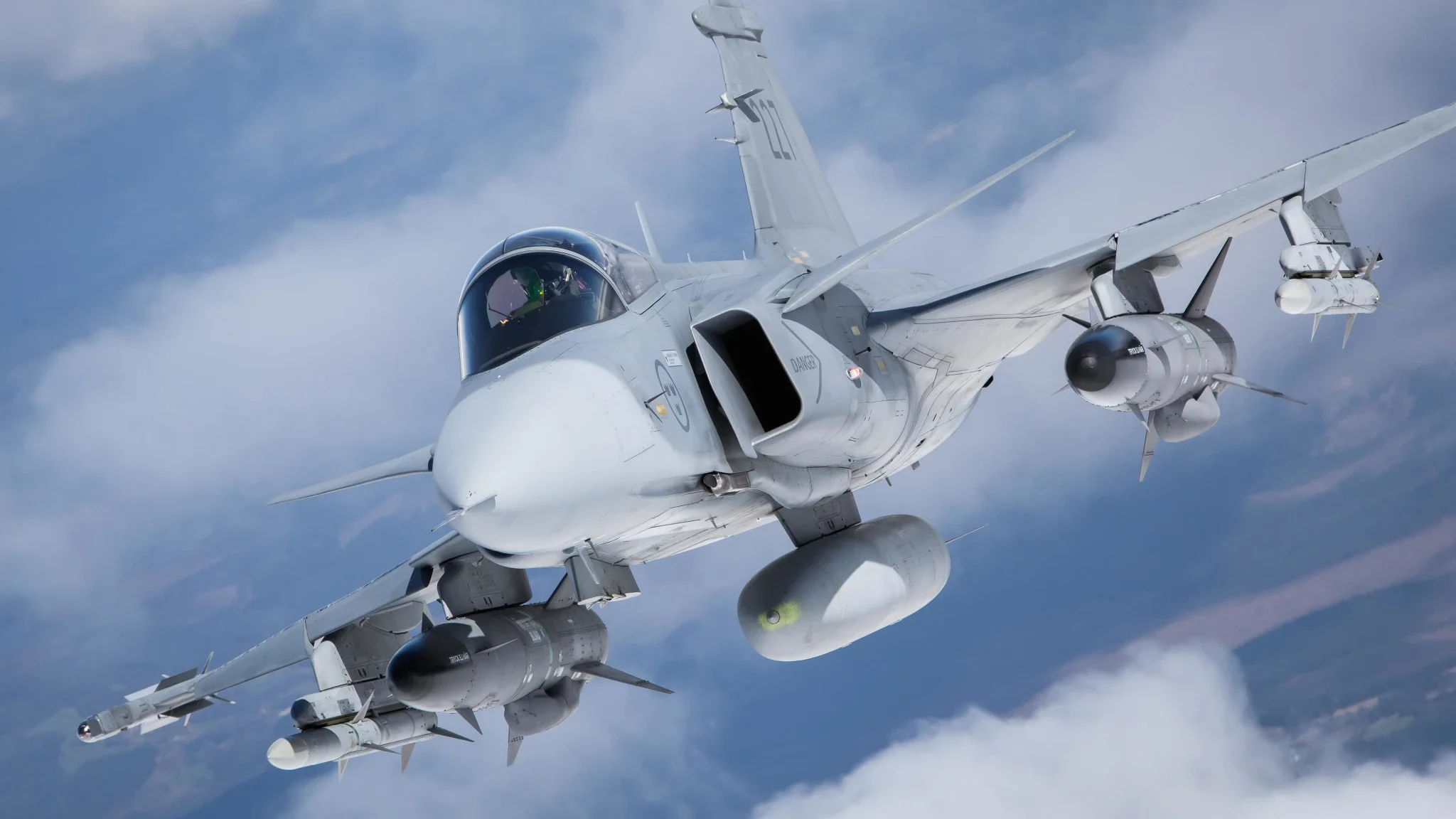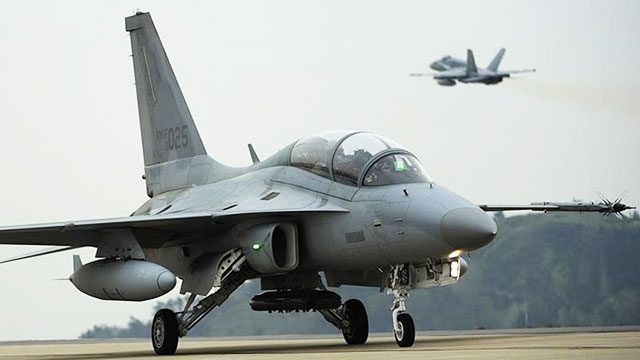South Korea’s Pitch
The Korean Aerospace Industries (KAI) has offered the sale of the FA-50 light fighter aircraft to the Royal Thai Air Force (RTAF), as it plans to spend 519 million USD (19 billion Baht) in the next fiscal year to acquire new fighter aircraft based on claims from the Thai Defense Ministry.
The idea, proposed by KAI CEO Kang Goo-young, was presented to Thai Defense Minister Sutin Klungsang during his trip to South Korea, which ended on March 31st. Sutin observed the T-50 advanced trainer aircraft, the last two going to the RTAF in August of this year from an invitation made by the South Korean Defense Ministry.
In 2015, the RTAF purchased eight T-50 and six FA-50 aircraft currently in service in the 4th wing based in Nakhon Sawan in 2018.
If acquired, these aircraft will replace the fleet of F-16s, likely the older A and some two-seater B variants Thailand operates. Kang Goo-young stated that KAI’s FA-50 is a multirole fighter that can match the air capabilities of the US-made F-16 but at half the cost and a lower maintenance cost.
The RTAF has plans to decommission the twelve F-16s part of Squadron 102, at Wing 1.
Thailand is debating between a newer generation of the F-16 Block 70 and the Swedish JAS 39 Gripen E/F, which Thailand uses. A committee tasked with weighing both options is expected to decide by May or June 2024.
The F-16 costs around 60 million USD, with a per-hour flight cost of around 10,000-20,000 USD, vs. the FA-50’s around 40 million USD and around 5,000 USD per-hour of flight. Cost can depend on variants of aircraft.
With the budget mentioned, the RTAF can procure around eight FA-50s, totaling fourteen, the size of an average squadron of aircraft. Given the higher cost of the F-16 and JAS 39, the total numbers would be lower.
The F-16 and JAS 39
The General Dynamics F-16 Fighting Falcon is a well-known and tested multirole single-engine, single or double-seater fighter jet used by many nations such as the U.S., Japan, Israel, among others.
The F-16 is powered by a one Pratt-Whitney F100-PW-220 turbofan engine with 23,000 lbs. of thrust and a speed of 1.73-2 Mach. It is capable of carrying bombs and different types of missiles and is armed with a 20mm M61 cannon, loaded with up to five hundred rounds.

Since its first flight, the F-16 has been in conflicts such as Desert Storm and Yugoslavia, Iraq, Afghanistan, and Libya.
The SAAB AB JAS-39 Gripen is a Swedish multirole fighter used around the world powered by a Volvo RM12 afterburning turbofan engine with 14,000-20,000 LBF of thrust, and the ability to travel around Mach 2.

It carries a similar armament to the F-16, with the ability to carry various types of missiles and bombs, and is also armed with a 27mm Mauser BK27 revolver cannon with one hundred and twenty rounds, only in the single seat variant.
Specifications among different variants of each aircraft can differ.
The FA-50
The KAI FA-50 is based on the Trainer T-50, adapted from the F-16, and is a multirole engine single and double cockpit aircraft in use by a fair amount of nations, including Indonesia, Iraq, Poland, and the Philippines.

It is powered by a General Electric F404-GE-102 turbofan engine capable of a thrust up to 17,700 LBF and speeds of around Mach 1.5.
It carries a similar armament to the other two aircraft, capable of carrying most of the South Korean Air Force’s missiles, bombs, and other munitions. A 20mm cannon is also present.
Analysis
The F-16, KA-50, and Gripen are all capable, well-rounded, and respected aircraft, and have proven to be among the best 4th generation aircrafts to date. There is also an advantage in that Thailand has experience with all three platforms, although RTAF pilots will likely need to adapt to newer avionics that newer aircraft will have.
Although the KA-50 is considered a solid airframe, it is unlikely that it can equally match all categories of any newer variant F-16, or the Gripen. The latest version of the F-16 has better specifications in most categories, not to mention a greater portfolio of combat experience.
The main advantage if the FA-50 would selected is cost, as the total cost compared to the F-16 and JAS 39 is lower. If a FA-50 were to crash, the financial result would not be as catastrophic compared to other aircraft, and the RTAF would have more aircraft at the end of the day should one be taken out of service.
The F-16 and JAS 39 are older frames, and the FA-50 is a newer one, it could also make repairs easier. Pilots can also get longer hours of training in the FA-50, given the lower cost per hour of flight.
Another advantage is the fact that the FA-50 is the combat version of the T-50, meaning if a pilot has trained on the T-50, they will be more familiar with the FA-50, as would maintenance crews.
The FA-50 would be a more economic-friendly option and could still pack the necessary aerial capabilities the RTAF wants. The F-16 or JAS-39 would likely deliver high performance and more firepower, although it is more expensive.


